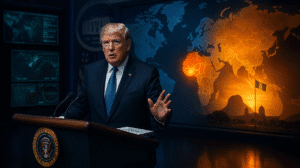Global nuclear power production surged past previous highs in 2024 yet faces a complex web of challenges that threaten its ability to sustain growth. According to the World Nuclear Industry Status Report, output rose to 2,677 terawatt-hours (TWh), a 2.9 percent increase over 2023, mostly driven by China. Still, analysts warn that maintaining, let alone exceeding, that total will grow increasingly difficult.
Drivers of the 2024 Peak
A combination of higher utilization rates at existing reactors and a handful of newly commissioned ones underpinned the global rise in nuclear generation. Worldwide average capacity factor, a measure of how intensively plants are running, held at about 83 percent in 2024, up slightly from 82 percent in 2023. Furthermore, construction of new plants, though slower in number, continued in places like China, France, India, the UAE and the US., according to the World Nuclear Association.
Yet these gains are shadowed by structural headwinds. Aging nuclear fleets are increasingly prone to downtime and maintenance issues. Construction delays remain pervasive, especially outside of the handful of countries with state-led programs. Renewables plus battery storage are not only outpacing nuclear in investment amounts, but also in capacity additions. In 2024, investment in renewables was twenty one times greater than nuclear, while added capacity from renewables exceeded the net new nuclear additions by over a hundred times. Battery storage costs dropped by roughly forty percent, while nuclear plant cost escalation continues.
Implications for the Near Future
If current trends persist, the global nuclear share of electricity generation, about nine percent in 2024, may begin to shrink. To avoid that, the report estimates that forty-four additional new reactors beyond those already in planning would need to begin operations by 2030, a build rate about two and half times higher than that observed in the past decade. Failure to deliver at that rate means growth will stall or reverse.
Moreover, small modular reactors (SMRs) are often cited as a potential bridge to faster nuclear expansion. Yet outside China, which has two SMR designs under construction or operation, SMRs remain largely theoretical or developmental. Data on costs, performance, and regulatory frameworks are still sparse.
Economic and Strategic Consequences
The diversion of investment toward renewables and storage erodes the economics of new nuclear projects. As battery storage becomes cheaper, grid flexibility increases, reducing the need for large, baseload-style plants like traditional nuclear reactors. Countries that once saw nuclear as central to their decarbonization agendas may shift toward mixed portfolios dominated by renewables, backed by storage and demand-side flexibility.
For governments and utilities, this shift has strategic implications. Nations relying on nuclear for energy security or carbon neutrality must address several risk factors: securing finance, managing supply chain constraints (including uranium), and ensuring public support amid concerns of cost, delays, and safety. Without addressing these, nuclear projects risk being sidelined in policy and market priorities.
A Final Note
The record nuclear output in 2024 demonstrates potential, but it does not guarantee momentum. The slow pace of new reactor startups, rising costs, competition from cheaper renewable alternatives, and aging infrastructure suggest a likely slowdown unless there is concerted investment and policy support. For nuclear energy to maintain or grow its role in the world’s electricity mix, the industry must improve speed of delivery, reduce cost escalations, and clarify the role of emerging technologies like SMRs.












